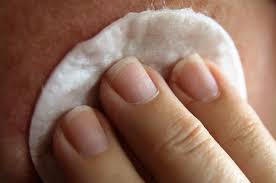Introduction
Panthenol is the provitamin form of vitamin B5 . A provitamin is a form of a vitamin used
in cosmetics and other products that the body can metabolize into the vitamin later on. In
skincare products, panthenol is used as a moisturizer and to heal wounds. It goes by many
names, including dexpanthenol, D-pantothenyl alcohol, provitamin B5 and butanamide. Once the
body absorbs it, it is transformed into vitamin B5 by the skin cells. Under INCI, it retains its
common name, panthenol.
Molecular Properties
Panthenol’s IUPAC (International Union of Pure and Applied Chemistry) name,
2,4-dihydroxy-N-(3-hydroxypropyl)-3,3-dimethylbutanamide, seems complex at first, but it is
actually very simple. The first part, 2,4-dihydroxy, indicates the presence of two hydroxyl
(alcohol) groups at points 2 and 4 on the carbon chain. The next section, N-3-hydroxypropyl,
shows that there is a side chain of three carbons with a hydroxyl group. The third part,
3,3-dimethyl shows the presence of two methyl groups on the butanamide chain. The final
section, butanamide, simply means a chain of four carbons with an amine group on the end.
Panthenol has a single pair of enantiomers. Enantiomers are a pair of molecules that are
mirror images of each other due to bond placement. In the case of panthenol, only the D-form is
biologically active, though both have moisturizing properties. The D stands for dextrorotatory
(rotates clockwise) and L stands for levorotatory (rotates counterclockwise). The rotation refers
to which direction a molecule rotates a beam of plane-polarized light. In cosmetics, panthenol is
sold in the form of the D enantiomer by itself or a racemic (equally split) mixture of both the D
and L enantiomers.
Physical PropertiesAt room temperature, panthenol is an odorless liquid that is highly viscous. It is
transparent and colorless. However, it can be bought in solid form. Salts of pantothenic acid take
the form of white crystalline powders. It is soluble in water, ethers, glycerin, and alcohols. It has
a density of 1.2 g/mL, slightly higher than that of water. It boils at 118º C (244º F), above the
temperature of water. In water, it has a pH of 8.0 to 9.0 – between ocean water and baking soda.
This is far more alkaline than human skin (4.2 to 5.4). Fortunately, it is usually used in such a
low concentration that it will not affect the final pH of the product.
Uses
Vitamin B5 is necessary for healthy skin and hair, so it makes sense that panthenol, a
derivative of this, is common in many cosmetic products and dietary supplements. However, B5
is not very good at penetrating the skin by itself. Panthenol, on the other hand, is one metabolic
step away from vitamin B5 and more effective at penetrating the skin, making it an obvious
choice.
In skin products, it is used as a moisturizer and to treat conditions including but not
limited to: sunburn, rashes, mild burns, itching, inflammation, acne, and small cuts. One benefit
it has is its ability to regenerate the outer skin layers of the epidermis and corneum stratum. In
some cases, it is utilized as a humectant (moisture retainer) to help hydrate the skin and reduce
water loss. Unlike some humectants such as hyaluronic acid, panthenol is also an emollient (skin
softener), helping to seal cracks in the skin and hold in water. When used in skin products, it has
a concentration of 1% to 5%.
Another use for panthenol is the reduction of inflammation. Panthenol can be made into
pantothenic acid which helps produce an enzyme used in the production of steroids and fattyacids. The body uses these two classes of compounds to reduce inflammation. For this reason, it
is often found in sunscreens and sunburn treatment products.
Panthenol is also used in hair products in concentrations of up to 1% because it bonds to
the hair shaft, giving it a shiny appearance.
Human nails are made from keratin, the same protein as hair. As panthenol improves the
strength of hair, it has similar effects on nails. It is used in strengthening and shining treatments
for nails in concentrations of .5% to .75%.
Manufacturing
Panthenol is made by combining d-pantolactone with aminopropanol. Another method
involves combining benzyl alcohol with an aqueous solution of ammonium sulfate. It can also be
extracted from sugar or honey. Some synthesis processes even use enzymes and bacteria to
create large amounts of panthenol.
Substitutes
Panthenol is a very cheap chemical and easy to find, but in the event that it cannot be
obtained, there are some alternatives. N-acetylglucosamine, allantoin, and urea all share some
properties with it. The humectant effect can be replicated by using a hydrolyzed protein. The
soothing effects it produces are easy to duplicate with herbal extracts such as calendula.
Storage
When stored in a cool, dry, and dark place, panthenol will last for up to two years. Like
all ingredients, it should be kept in a tightly sealed container.
Safety
Panthenol is safe to use, non-irritating, and good for all skin types. In fact, the FDA has
given it a GRAS (generally regarded as safe) rating. This rating is given to products with noknown harmful effects. In rare cases, it may cause allergic reactions. It works very well with
other skincare products, so there is very little to no chance of a negative reaction. There are no
known side effects from using panthenol multiple times per day or in multiple formulations.
If it gets in the eyes, immediately rinse with water for fifteen minutes, including under
the eyelids and get medical attention. If ingested, do not induce vomiting. As with all liquids,
take care to work in a ventilated area. Instead, call your local poison control center for more
information. It has no reactivity or health hazards under the 2012 OSHA (Occupational Safety
and Health Administration) Hazard Communication Standard, but always remember to read the
MSDS (manufacturer’s safety data sheet) for any chemical you work with, especially those that
are unfamiliar to you.


No Comments